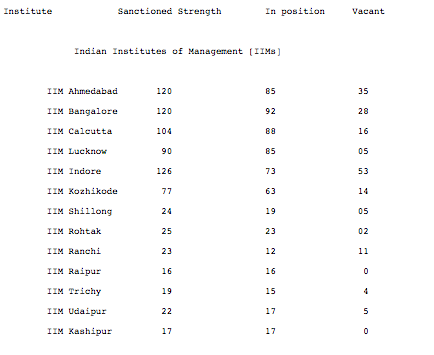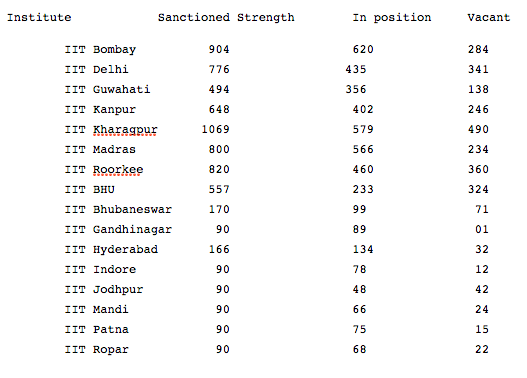In economic theory, outside of capital markets, “liquidity” is a topic that isn’t spoken about as much as it should. While I’m no academician to set this right in theoretical circles, I’ll make an attempt to help my readers what the fuss is all about.
Well past midnight, when you exit a mall after having just watched the “second show” of a movie, you will find a bunch of auto rickshaw drivers who accost you. Without exception, each of them is likely to quote an exorbitant price to take you home. As the night goes on, there is a reasonable chance that some of these drivers will have to move away from the mall, unable to have found a customer for the night.
Two months back, I was looking to purchase a high end laptop. I walked the high streets of Bangalore, going to every big and small computer store I came across. Each brand had a maximum of one laptop that fit my requirements. I ended up purchasing the laptop I’m typing this post on in the US (got a cousin to bring it in for me).
In London in 2005, a sandwich at Subway cost less than two pounds, while a Masala Dosa at a half-decent restaurant cost at least seven or eight pounds. In Bangalore today, a first rate Masala dosa won’t set you back by more than thirty rupees, while a standard unexceptional “sub of the day” at a subway costs over twice that amount.
All the above cases of pricing anomalies or market failures can be ascribed to “lack of liquidity”. In financial literature, liquidity is defined as an asset‘s ability to be sold without causing a significant movement in the price and with minimum loss of value (source: Wikipedia). From a practitioner’s standpoint, liquidity is positively correlated with the amount of activity that is happening in the market – the more the buyers and sellers for a particular security, the less the “transaction cost” you incur in selling it.
Auto rickshaws in the middle of the night, dosas in London, subs in Bangalore and high end laptops in India – they are all examples of markets that (by the above definition) are highly illiquid. In each of the above markets, the number of buyers and sellers at any point of time is low (relative to other comparable markets – such as auto rickshaws in the evening or dosas in Bangalore). Thanks to that, the “bid ask spread” (my apologies for continuing to use financial jargon. Bid ask spread refers to the price between the highest price a buyer is willing to pay and the lowest price a seller is willing to accept) is high, and consequently, buyers end up paying a high price, or in some cases, sellers end up not realizing a high enough price for their good.
Now, why should this happen? Doesn’t it sound counterintuitive if I say that “there isn’t much demand for subs in Bangalore, hence the price is high”? The fact is that when I say that “there isn’t much demand” I omit saying that there isn’t much supply also. This calls for further explanation.
Let us imagine a world where it is impossible for a buyer and a seller to interact directly to conduct a sale (this sounds like dystopia, but let us imagine a situation like that). In this world, there are a bunch of “specialists” called “market makers”, whose only job is to buy and sell goods. So if you are the seller of a particular good, instead of finding a buyer, you sell it to a market maker, who takes the risk of holding on to your good (carrying cost, possible damage, risk of sudden fall in value of that class of goods, etc.) until he has found a seller. Similarly, if you want to buy something, you only contact a market maker.
When there are a large number of buyers and a large number of sellers for a particular good, the costs of making markets is low. Due to the number of buyers, the average length of time a market maker has to hold on to the good is low, which automatically reduces the risk of making markets in this particular good. Since the cost of making markets in this good is low, more market makers will want to make markets for this particular good. Their competition lowers the bid-ask spread (refer to definition above), and thus both buyers and sellers will realize a price that is close to the true market clearing price.
Now what happens when there are few buyers and sellers for a good? Very few market makers will want to trade in this good, since the risk of holding on to these goods is significantly higher. Consequently, there is less competition among market makers and the bid ask spread remains high (while it is a fact that the cost of market making is also high for these goods, the lack of competition in market makers further pushes up the spread). As a seller, you now have much less choice in terms of buyers for your good, so you end up accepting a rate much lower than true market clearing price. Similarly, as a buyer, you end up paying exorbitant prices.
Now let us get back to the real world where buyers and sellers can actually interact. It can be seen as being similar to the above world, but with the change that buyers and sellers are their own market makers! The cost of making markets comes into play here. As a seller of auto rickshaw services outside a mall past midnight, you know there is a risk of not finding a buyer for your services. You try and price in this risk in the price you quote, and you end up asking for more than the market clearing rate, and there is a good chance there will be no takers for that rate, until you get desperate about finding a customer and quote something below the clearing rate. If you are looking to hail a rickshaw outside a mall past midnight, you are wary of being stranded there without a ride home, so you end up paying much more than the true clearing price.
Several examples of this nature abound. Like how real estate prices are “sticky”, and builders refuse to drop prices in the face of falling demand (note there that real estate brokers are not market makers – they don’t take on the risk of holding on to the asset). Like how I get suboptimal rent for the house that I own in Kathriguppe in Bangalore, only because there aren’t too many people who want to rent a 3BHK independent house. And how apple products are almost a fourth more expensive in India than in the US.
Moving briefly from micro to macro economics, GDP grows when there is more economic activity, or when there is more trade. One way of increasing GDP is to foster trade. However, a large number of goods and services that people need, or that people want to provide, are “illiquid” (that includes Quant consulting – which is what I do. There aren’t too many of my ilk around, and no too many organizations interested in buying these services). One way of fostering internal trade, and thus economic growth, is to reduce the cost of market making. When it comes to goods, VAT, in that sense is a step in the right direction since at each step it is charged only on the marginal value added – and thus the presence of an intermediary doesn’t increase the total cost by too much. Stamp duty on real estate, however, is a bad idea. By charging a full tax on every transaction, it dissuades market makers in the sector, and thus keeps markets illiquid and opaque. The worst of all, though, is Agricultural Marketing, where by law the APMCs have monopoly in making markets in agriculture. Now you know why the farmer continues to suffer even though retail prices of agricultural products have been going through the roof.
Ok I end this post with that digression into macroeconomics. However, I do hope that I’ve been able to explain to you why illiquid products are costlier (if you’re a buyer that is)! Let me know in case you have any questions.
Update
This post came about as a result of a twitter conversation earlier today with Dhiren and Pavan. Giving credit where it’s due

